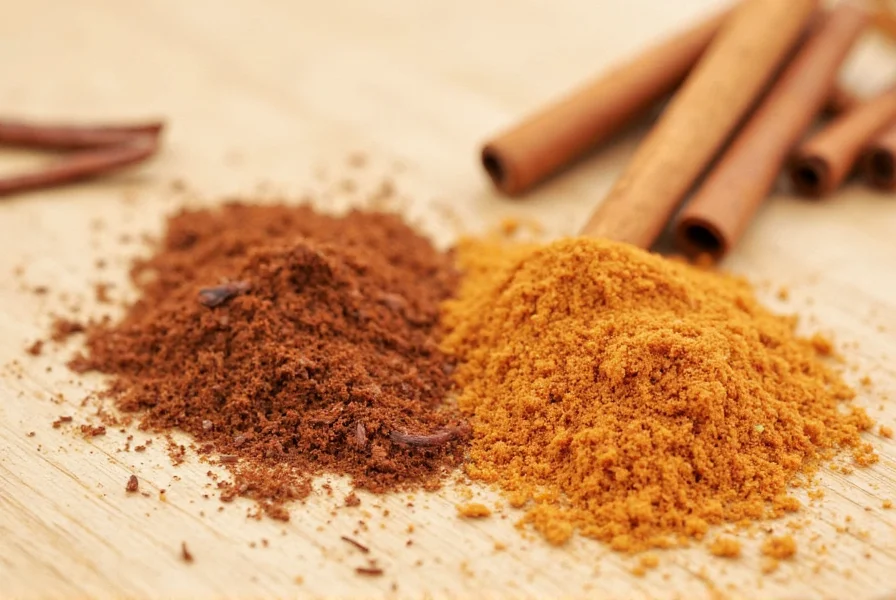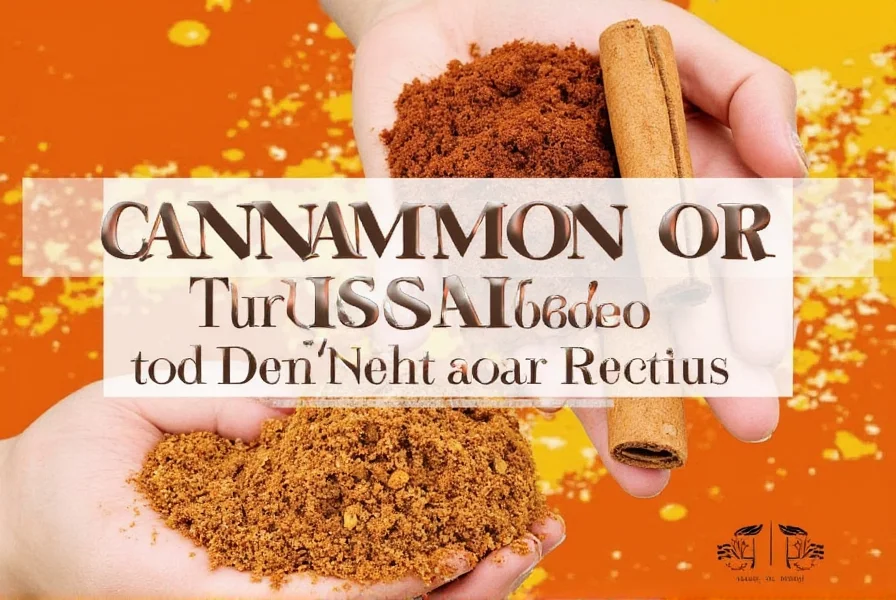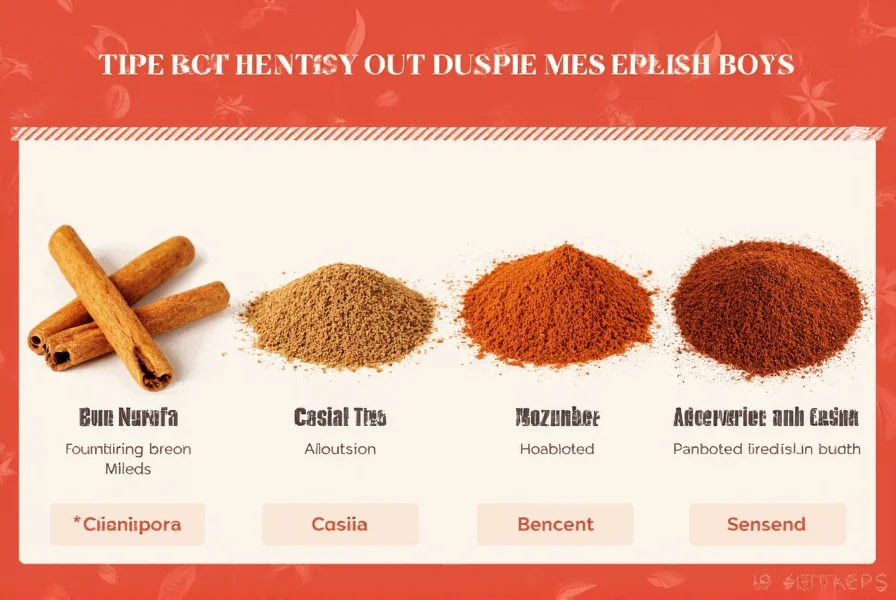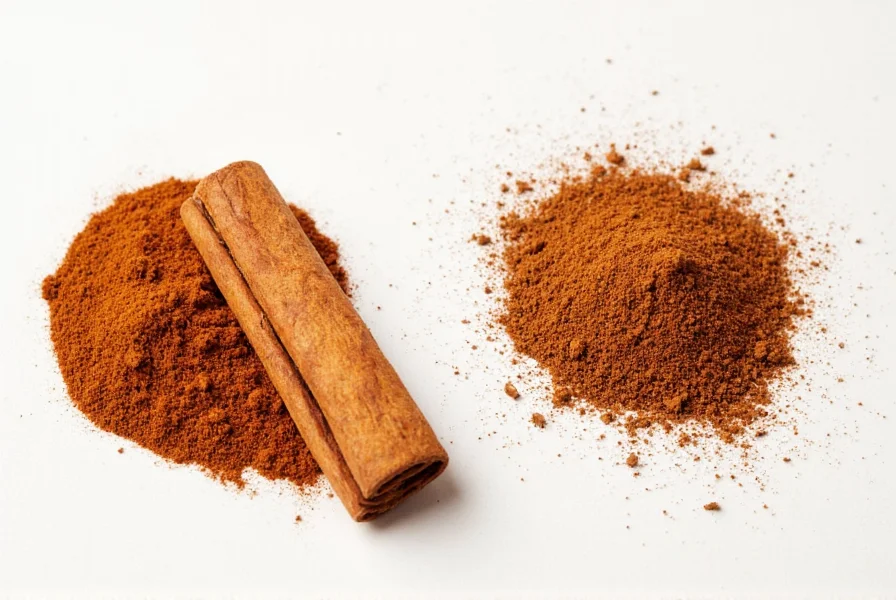Based on FDA and European Food Safety Authority guidelines, when you see 'cinnamon' in your grocery store, it's often actually cassia—a stronger, more affordable spice. True cinnamon (Ceylon) is rarer and safer for daily use. Here's what you need to know about the differences, health risks, and best uses for each.
Table of Contents
- The Cinnamon vs. Cassia Debate
- What Exactly Are Cinnamon & Cassia?
- Spotting the Differences: Appearance, Flavor, and Origin
- Health Perks & Warnings: Which One Wins?
- Cooking With Cinnamon vs. Cassia: Tips from the Pros
- Buying Guide: How to Choose Your Spice
- Frequently Asked Questions
- Final Thoughts: Pick Your Champion
The Cinnamon vs. Cassia Debate
If spices had rival high school football teams, cinnamon and cassia would definitely be on opposite sides. While they both bring heat (literally), they play by different rules.

One is sweet and subtle; the other is bold and punchy. So which one should be in your kitchen? Let's dive in and find out.
What Exactly Are Cinnamon & Cassia?
Both cinnamon and cassia come from the inner bark of tropical trees belonging to the laurel family. But that's where the similarities end.
- Cinnamon, also known as "true cinnamon" or Ceylon cinnamon, comes primarily from Sri Lanka. It has a light brown color, multiple thin layers, and rolls up like a cigar.
- Cassia comes from China and Indonesia. It's thicker, darker, and harder, with a single-layer bark.

Spotting the Differences: Appearance, Flavor, and Origin
Here's a quick visual and sensory breakdown so you can tell them apart without needing a magnifying glass.
| Feature | Cinnamon (Ceylon) | Cassia |
|---|---|---|
| Origin | Sri Lanka, India | China, Indonesia |
| Appearance | Thin, multi-layered bark | Thick, hard, single layer |
| Color | Pale brown | Dark reddish-brown |
| Taste | Delicate, sweet, complex | Strong, spicy, slightly bitter |
| Coumarin Content | Very low | High |
Flavor Profiles: When Taste Makes the Difference
Ceylon cinnamon is more nuanced and blends beautifully in desserts, pastries, and even savory dishes. Cassia brings the punch — great for hearty stews, spiced teas, or anything that needs a kick of warmth.
Health Perks & Warnings: Which One Wins?
Both spices are praised for their health benefits, including anti-inflammatory properties, blood sugar regulation, and antioxidant activity. But there's a catch:
- Cassia contains coumarin, which in large amounts may cause liver damage.
- Cinnamon (Ceylon) is much lower in coumarin, making it safer for regular consumption.
So if you're sprinkling cinnamon every morning in your coffee or oatmeal, go for Ceylon. If you're making a once-in-a-blue-moon gingerbread house, cassia works just fine.

Cooking With Cinnamon vs. Cassia: Tips from the Pros
Ready to level up your spice game? Here's how to use each variety like a pro chef.
When to Use Ceylon Cinnamon
- Milk-based desserts (like rice pudding or custard)
- Light baked goods (think snickerdoodles or cinnamon toast)
- Coffee or tea blends (especially chai latte)
- Smoothies and porridge
When to Use Cassia
- Meaty dishes (Indian curries, Moroccan tagines)
- Spiced wines (mulled wine, glögg)
- Winter baking (apple pies, gingerbread cookies)
- Homemade spice mixes (e.g., garam masala, Chinese five-spice)

Buying Guide: How to Choose Your Spice
The spice aisle can be overwhelming, but here's a cheat sheet to help you make an informed decision.
Look at the Label
- If it says simply "cinnamon," chances are it's cassia.
- "Ceylon cinnamon" will usually be labeled clearly — sometimes marked as "true cinnamon."
Form Matters: Sticks vs. Powder
- Sticks: Ideal for simmering into liquids, flavoring rice, or keeping around for aesthetic value.
- Ground: Best for baking, mixing into dry ingredients, or sprinkling over yogurt or oatmeal.
Top Picks for Cinnamon & Cassia
1. Ceylon Cinnamon Sticks – Artisana Organics

- Features: Thin, layered sticks, organic certified
- Advantages: Low coumarin, easy to grind or simmer
- Use Cases: Tea, desserts, smoothies
- Audience: Health-conscious cooks and bakers
- Occasion: Daily use, gourmet recipes
2. Ground Cassia – Simply Organic
- Features: Bold aroma, USDA Organic
- Advantages: Affordable, strong flavor
- Use Cases: Baking, mulled drinks, savory spice blends
- Audience: Everyday home cooks and holiday bakers
- Occasion: Seasonal treats and hearty meals
3. Ceylon Cinnamon Powder – Frontier Co-op
- Features: Fine powder, sustainably sourced
- Advantages: Versatile, safe for daily use
- Use Cases: Coffee, porridge, yogurt bowls
- Audience: Wellness-focused individuals
- Occasion: Morning routines and healthy snacks
Frequently Asked Questions
What's the main difference between cinnamon and cassia?
The main difference is that "true cinnamon" (Ceylon cinnamon) is milder, sweeter, and has multiple thin layers that resemble a cigar roll, while cassia is bolder, spicier, slightly bitter, and consists of a single thick, hard layer. Ceylon cinnamon primarily comes from Sri Lanka, while cassia is mainly sourced from China and Indonesia.
Which is healthier: cinnamon or cassia?
Ceylon cinnamon is generally considered healthier for regular consumption because it contains significantly lower levels of coumarin—a compound that in large amounts may cause liver damage. Cassia has much higher coumarin content, so while occasional use is fine, daily consumption (like in morning coffee or oatmeal) is better done with Ceylon cinnamon.
How can I tell if I'm buying cinnamon or cassia at the store?
Check the label carefully—products labeled simply as "cinnamon" are almost always cassia. Look for "Ceylon cinnamon" or "true cinnamon" for the milder variety. Visually, Ceylon cinnamon sticks are thin, brittle, and have multiple layers like a cigar, while cassia sticks are thick, hard, and consist of a single rolled layer. Ceylon is lighter brown, while cassia is darker reddish-brown.
Can I substitute cassia for cinnamon in recipes?
Yes, but with important considerations. In most baking recipes, you can substitute one for the other, but remember that cassia has a stronger, more assertive flavor. For delicate desserts, light pastries, or beverages where you want subtle spice notes, Ceylon is preferable. For hearty dishes like stews, mulled wines, or robust baked goods, cassia works well. When substituting, use slightly less cassia than the recipe calls for since it's more potent.
Is cassia unsafe to eat?
Cassia isn't unsafe in moderate amounts—it's been used safely in cooking for centuries. The concern is with regular, high consumption due to its coumarin content. The European Food Safety Authority recommends a maximum daily intake of 0.1 mg of coumarin per kilogram of body weight. For most people, this means limiting cassia to about 1 teaspoon per day for regular consumption. Occasional use in holiday baking or special recipes presents no significant risk.
Why is cassia more common than "true" cinnamon in supermarkets?
Cassia dominates supermarket shelves primarily because it's less expensive to produce and has a stronger, more assertive flavor that many consumers associate with "cinnamon." It's also easier to harvest and has higher yields per tree compared to Ceylon cinnamon. Historically, cassia was the variety first introduced to Western markets, so consumer expectations developed around its flavor profile.
How should I store cinnamon or cassia to maintain freshness?
Store both cinnamon and cassia in airtight containers away from light, heat, and moisture. Ground spices keep their potency for about 6 months, while cinnamon sticks can stay fresh for up to 1-2 years. For maximum shelf life, consider storing in the freezer, especially if you buy in bulk. Whole sticks retain their flavor longer than ground versions, so consider buying sticks and grinding as needed for best results.
Does cooking reduce the coumarin content in cassia?
No, coumarin is heat-stable and doesn't break down significantly during cooking or baking. While some coumarin may leach into liquids when making beverages like mulled wine or chai, the compound remains largely intact through normal cooking processes. This is why health recommendations regarding coumarin intake apply to both raw and cooked cassia.
Final Thoughts: Pick Your Champion
In the corner of sweet subtlety stands Ceylon cinnamon. In the other, the bold powerhouse known as cassia. Both have earned their place in kitchens across the globe — it's all about knowing which one suits your taste, your health goals, and your recipe best.
For daily consumption, choose Ceylon cinnamon to avoid coumarin risks. Reserve cassia for occasional use in robust recipes where its bold flavor shines. Always consult a healthcare professional for personalized dietary advice.











 浙公网安备
33010002000092号
浙公网安备
33010002000092号 浙B2-20120091-4
浙B2-20120091-4